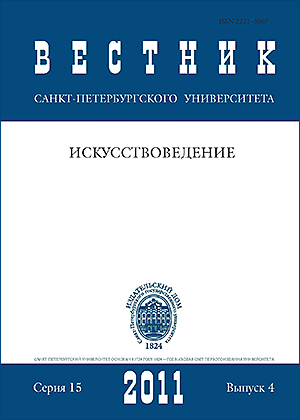Barberini Faun. Understanding the image of “ingenuous nature”
Abstract
The article is dedicated to the Barberini Faun (Satyr): its origin, style and meaning. In addition, it provides a brief overview of the ideas by competent scholars, sometimes concurring and conflicting at the same time. Still it is traditionally asserted that the statue belongs to Pergamene school of the end 3rd — the early 2nd century BC. Expressiveness of the image is based on a combination of two features of the form: a physiognomics, describing the body of the Satyr, and the body’s being asleep. In the physiognomics animal signs of satyr are shaded and heroic masculine gender type is accentuated. Being asleep is a consequence of the satyr taking communion wine which acts here as the essence of its patron; thus Dionysus tames the satyr and simultaneously takes him under his protection.
Keywords:
the Barberini Faun (Satyr), Hellenistic fine art, the Pergamene style, ancient physiognomics, Dionysus
Downloads
References
References
Downloads
Published
How to Cite
Issue
Section
License
Articles of "Vestnik of Saint Petersburg University. Arts" are open access distributed under the terms of the License Agreement with Saint Petersburg State University, which permits to the authors unrestricted distribution and self-archiving free of charge.






